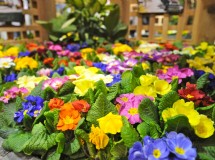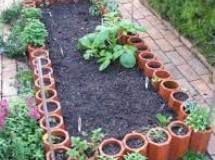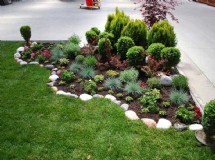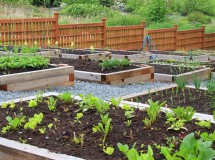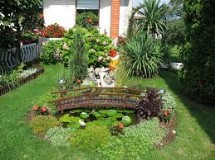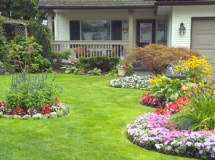- 1). Start your preparations five weeks before the last frost in your area. Last frost ranges from mid-April in Western Washington's U.S. Department of Agriculture growing zones 7 to 8, to mid-May in Central and Eastern Washington. This puts garden preparations at the start of March to the start of April, respectively.
- 2). Find a site that gives you at least 20 square feet of planting space so you're not crowded. Make sure that the site gets eight hours of full sun every day and quick drainage.
- 3). Turn up the top 6 to 10 inches of soil in the entire planting site, and pull out rocks and weeds. Add 2 inches of quick-draining garden soil and 3 inches of organic compost to give the site moisture retention while aiding drainage, and to provide long-term nutrition for the plants. This addition will also raise your garden bed to guarantee drainage. Mix general purpose fertilizer into the top 2 inches of soil.
- 4). Plant early-spring veggies like asparagus, lettuce, onions, peas, radishes, rhubarb and spinach around March 10 in Western Washington and April 10 in the rest of the state. These are hardy vegetables that like a cool-season start and withstand late winter frosts.
- 5). Water the garden with 2 inches of water, then spread 2 to 3 inches of organic mulch to maintain soil moisture and warmth, and to discourage weed growth. Put the garden on a schedule of 2 inches of water every week, and re-mulch after each planting.
- 6). Plant mid-spring veggies like beets, broccoli, cabbage, carrots, cauliflower, celery, chard, kohlrabi, parsnips, potatoes and turnips two weeks later, and still before the last frost in your area. These are frost-hardy veggies that do well with a slightly cool start.
- 7). Plant late-spring veggies like beans, tomatoes, corn, cucumbers, eggplants, peppers, pumpkins, squash and melons only after the last frost lifts. These plants are sensitive to frost, and won't survive if they get hit with cold temperatures. In cold areas like Forks and Spokane, plant quick varieties of these long-season veggies to guarantee full maturity and vegetable harvest before the first frost in fall.
SHARE

